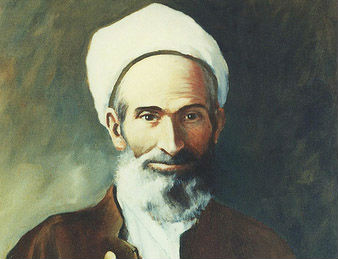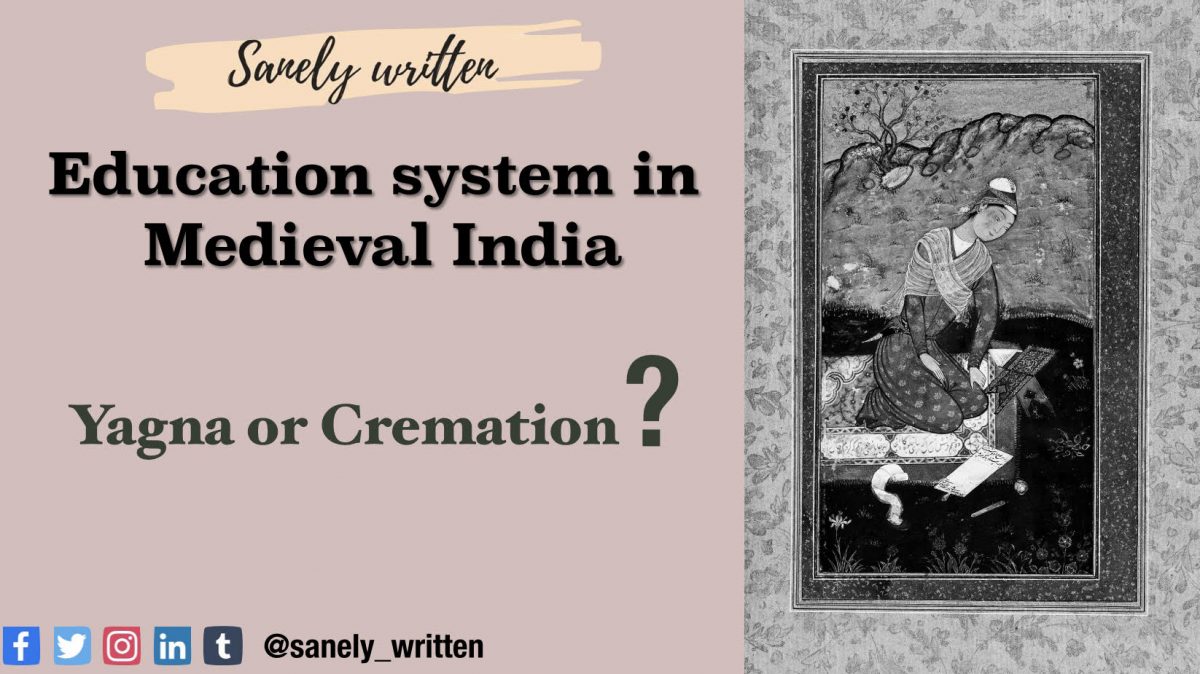For a distant eye, it is near to impossible to tell whether the origin of fire is a Yagna or cremation. But for ignorant flies, both are alike. The fire that we are talking about relates to the wisdom of the Vedas and collective knowledge that once dripped through the veins of education system of ancient India. For the flies, a fire is a fire. Nevertheless, it comes from the Yagna or from the pyre; the fire is same to them. We have written at length about the education system in ancient India and about its decline, enough for any thinker to decide whether the fire that we are going to talk about, comes from the Yagna of construction or the pyre of destruction.
The ancient education system received severe challenges from the rise of Buddhism but as it is said that the end decides the means, it is never at the centre of criticism for hampering the Vedic education. Both Hinduism and Buddhism found a way of peaceful coexistence and this remained the state for several centuries. The timeline for this piece would have been lengthy but unimportant, so let us churn eight to ten centuries in few pages. The medieval system of education can be bracketed from 1000 A.D. to mid 18th century. It is known to everyone that Islam was predominant in these years. What started with invasions and loots of the muslims culminated to a well established empire in the early 1500’s. It is but obvious that the subcontinent was forced to adhere to the lifestyle, manners, religious orientation and education system of the muslims.

Structure of Education:
- Maktabs: They were the primary schools where the foundations of the principles of Islam were laid. It was mainly for the children and focused on teachings of Islam, writing, reading and primitive mathematics. Mostly, methods of memorization were employed to teach a lesson. No ruler of the Mughal Empire (or Sher shah Suri) focused on written education except Akbar, who himself being an illiterate tried to bring reform in the system. It will not be wrong to say that Maktabs were the factory that produced blind believers of Islam as their finished products. These Maktabs were funded by public donations (a fruity name for unjust taxes).
- Madrasas: As it turns out, the finished products from Maktabs weren’t actually ready. After completing the primary education from Maktab, students were given higher education in Madrasas. The manuscripts available in present days tell us that girls were kept away from education but were given household trainings. The professional and the technical sciences were categorized as Maqulat and Manqulat respectively. Manqulat broadly consisted of history and law whereas Maqulat taught mathematics and medicine. The Madrasas were funded by the rulers. The famous Madrasas of that time were Muizzi, Firuzi, Nasiri and of Abu Fazl in Fatehpur Sikri. Although, it might seem to be a system with vast syllabi, it was mainly a system of recitation of Quran.

This structure of education was modeled on the pre-existing system of Abbasids of Bagdad. Mughals demolished Hindu and Buddhist temples, Pathashalas and Vidyapeeths and replaced them with mosques, Maktabs and Madrasas. While the poor majority was systematically cleansed of their original religion and fed with non-useful quotes, the same biased system reserved vocational education for the semi-elite families where they were taught useful skills of carving precious stones and making jewelleries of gold and silver.
Although, there were widespread missions to curb any attempt to revive Sanskrit, it managed to survive. Muslim rulers after acknowledging the fact that Sanskrit is indispensible, searched for a middle ground and their scholars were able to deliver it. The prominence of Persian language met with little resistance from local languages or Sanskrit. Eventually, the Persian alphabets were restructured and mixed with Arabian and Indian dialects and thus, Urdu came into existence and remained to be the language of the offices until the British replaced it with English.
The system of education in medieval India met its end with the collapse of the Mughal Empire. The flies came, hovered around and were burnt to ashes. The fire which unknowingly attracted the flies also became their doom. It is no doubt that ancient system was left in tatters, yet it survived. Same was the fate of medieval education system under the British rule. We leave it here for you to decide whether that fire was the Yagna of ancient teachings which was fueled by the sacrifices (Aahuti) of many; or it was the pyre which was setup to cremate the corpse of our education system.
Reference/s:
- Development of education in India during the medieval period – Adarini Kanjilal Biswas
- History of medieval India – Satish Chandra
- A comprehensive History of medieval India – S.A. Farooqui




2 replies on “Education System in Medieval India”
Awesome read
Delving into the metaphorical flames of wisdom and knowledge that once flowed through the veins of ancient India’s education system is akin to deciphering the source of fire—be it the sacred Yagna or the solemn pyre. The intricate discussion on the historical evolution of India’s educational heritage and its subsequent decline provides valuable insights. Just as flies may perceive both fires as similar, a deeper exploration reveals the nuances between the constructive Yagna of enlightenment and the lamentable pyre of decline. For those Schools in CV Raman Nagar understanding this distinction enriches the quest for educational enlightenment in the modern context.